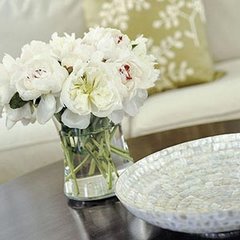 Light affects how color appears to us, for instance if you are looking at a block of red color it will change in appearance when exposed to lights of various intensities and types. The same color can appear to transition to another color depending on the light used to view the color. Not enough lighting will further darken a color and too much lighting will wash out a color.
Light affects how color appears to us, for instance if you are looking at a block of red color it will change in appearance when exposed to lights of various intensities and types. The same color can appear to transition to another color depending on the light used to view the color. Not enough lighting will further darken a color and too much lighting will wash out a color. Color & Natural Light : Natural light is generally the predominate home lighting during the day and depending on which direction your windows or glass doors face that will dictate the "color" and "visible temperature" of the natural light that enters your home.
If you have a warm orange-red paint on your living room wall and that room has a window facing west then the orange-red color will become even more vivid after noon. If in that same room the window faces north, the orange-red wall paint will be subdued and toned down because the light filtering in has a bluish cast.
Color & Artificial Light: Day light is supplemented by artificial light in our homes therefore we need to understand their properties. Most fluorescent lights give off a green tinge and can really dull warm colors. There are now fluorescent lights, which have a pink tinge, are more color friendly, and should enhance warm colors. Incandescent light or halogen lighting may cast a yellowing warm light dulling down cool colors. They however will enhance warmer colors.
Considering lighting when selecting colors for paint, wallpaper or fabrics for your home will help you understand how to avoid costly mistakes.


